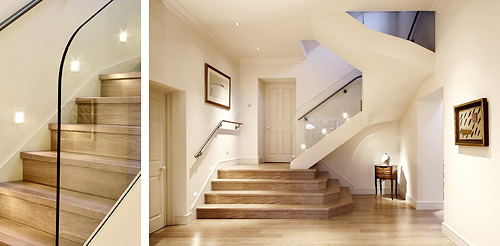 By Mark Warburton, Ivory Egg.
By Mark Warburton, Ivory Egg.
Continuing from last month’s article about making KNX more accessible, let’s have a look at one approach to selling. Firstly, let’s have a look at the background. Not the background of KNX, but the background of those who are responsible for selling and promoting KNX.
It is important to consider one’s own background when in a sales role. Once you have worked on KNX projects with a wide level of integration, it can be easy to fall into the trap of always offering a solution that controls all aspects of the building. Also, once you’ve worked on high-end projects, it is possible to forget that for the majority of homeowners, a simple increase in functionality will make a big difference.
Some of the happiest customers I have seen are those who have the most basic systems installed, as it meets their exact requirements. It might be as simple as upgrading from a single thermostat for the whole house to one for the living areas and one for the bedrooms. They’re not interested in having the whole home automated, they are happy with the small increase in functionality.

Compare this to a customer who has had numerous homes with full home automation. To impress that type of customer you are going to have to come up with something amazing. The trick is not to get the two confused!
Identifying a Problem
Once a conversation about the use of building technology has begun, one methodology to follow is to identify a problem, then solve it. The secret to this is to explore the problem to find the drivers behind it. Here are two examples:
Two young people are building a home in anticipation of the birth of their first child. Whilst discussing the use of building control, you mention that you can configure the keypads to bring on the lights at different levels based on the time of the day, and how with a traditional system, most lights always go 100% first. By then associating this with a real world example, such as checking on a newborn baby in the middle of the night you can explore the consequences of this, such as leaving the lights off and tripping, or waking the baby and getting even less sleep. It is important not to offer the solution as this comes later.

The other example is a restaurateur who is refitting their restaurant. As it is a business, they are keenly aware of the installation cost, and are not interested in lighting control. Given one of the benefits of a control system is the ability to fade the lights over a long time, making it possible to avoid the meerkat moment – i.e. when the lights are suddenly dimmed to make it more ‘romantic’. So it is worth exploring the consequences of not having this function. It may seem a minor inconvenience but customers are more likely to tip higher when the ambience is good, and well-tipped staff work harder, which in turn will make the business more successful.
Once you have identified the problem you can ask the customer, if you solved the problem, what would the positive effects be? At this point you still haven’t offered a solution but the customer is now thinking of the positive outcomes that will result from working with you.
These are two very simple examples, but there will normally be multiple problems that could be addressed for each customer, so the more you point out, the better.
Finding the Budget
Often customers have no perception of what a building control system will cost, and asking directly has a mixed response. Instead, by working out the problems you are able to solve and asking what they would pay for the solution, they will have an understanding of the value you can offer. This is where some quick estimation skills are useful – so you can set a realistic value based on what is required. Now you just need to ask what they can afford.
At this point, a solution still hasn’t been offered, so it is important to carry the problem through to the next stage when you do offer solution and pricing proposal. If you remind them of the problems, and the benefits of solving them before offering the solution, then you stand a much better chance of moving forward.
Conclusion
By spending time with a customer exploring their issues, and how you can resolve them, it makes it much easier to define the scope of the building control system and to arrive at a realistic budget for the solution, ensuring both parties are happy.
This methodology also allows you to position yourself as a trusted advisor who is not trying to sell the customer something that they do not want. It also enables you to stand out from the competition, as your customer will remember how you engaged with their issues. After all, they are more likely to go with the solution offered by someone they trust rather than the best price.
Mark Warburton is the Technical Director of Ivory Egg (UK) Ltd, a supplier of leading KNX products and provider of KNX training courses. Mark is also a regular contributor to KNXtoday magazine.










